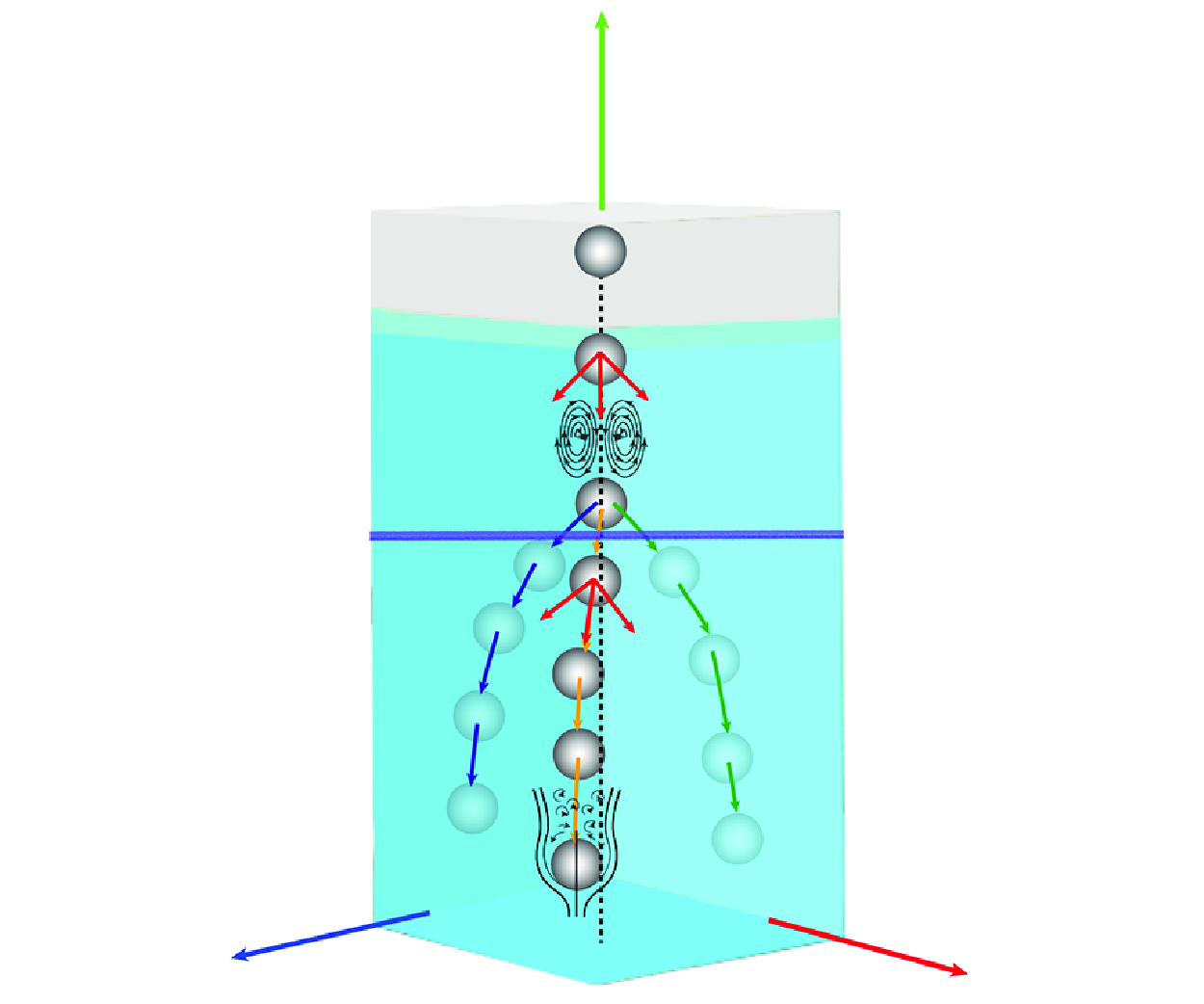No CrossRef data available.
Published online by Cambridge University Press: 28 May 2025

In this study, we experimentally examine the behaviour of a free-falling rigid sphere penetrating a quiescent liquid pool. Observations of the sphere trajectory in time are made using two orthogonally placed high-speed cameras, yielding the velocity and acceleration vectors through repeated differentiation of the time-resolved trajectories. The novelty of this study is twofold. On the one hand, a methodology is introduced by which the instantaneous forces acting on the sphere can be derived by tracking the sphere trajectory. To do this, we work in a natural coordinate system aligned with the pathline of the sphere. In particular, the instantaneous lift and drag forces can be separately estimated. On the other hand, the results reveal that when decelerating, the sphere experiences a very high drag force compared with steady flow. This is attributed to an upstream shift of the mean boundary-layer separation. The sphere also experiences significant lift force fluctuations, attributed to unsteady and asymmetric wake fluctuations. The trajectories can be reduced to three stages, common in duration for all initial Reynolds numbers and density ratios when expressed in dimensionless time. In addition, the sphere velocity and deceleration magnitude for different initial parameters exhibit a high degree of uniformity when expressed in dimensionless form. This offers prediction capability of how far a sphere penetrates in time and the forces acting on it.